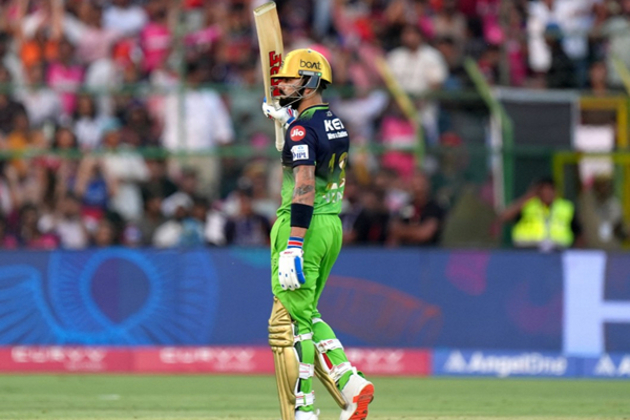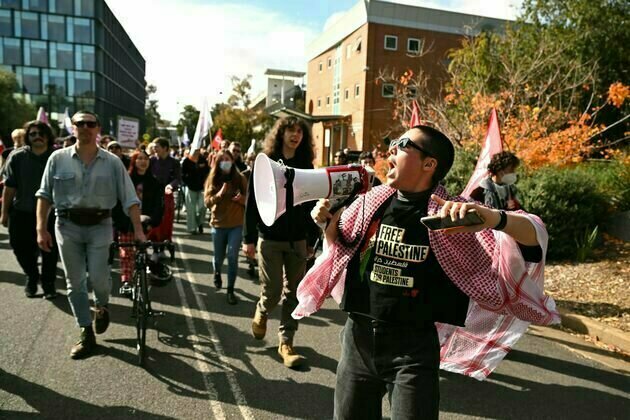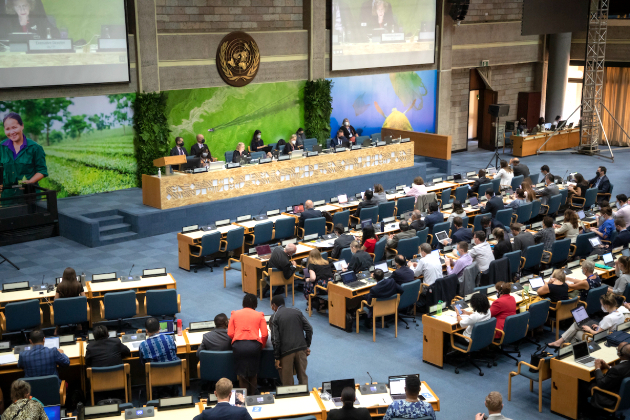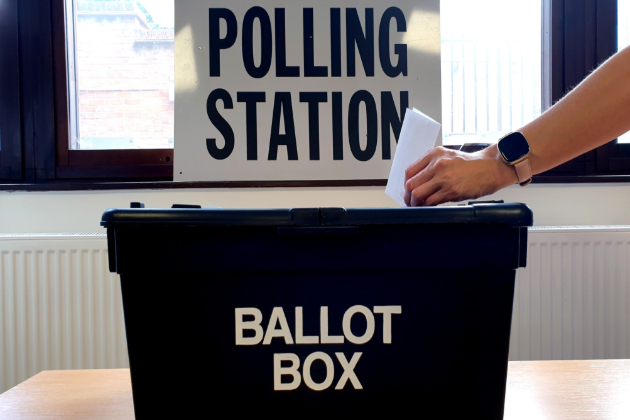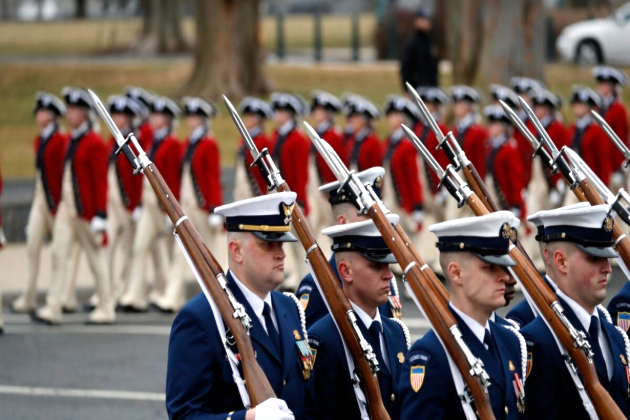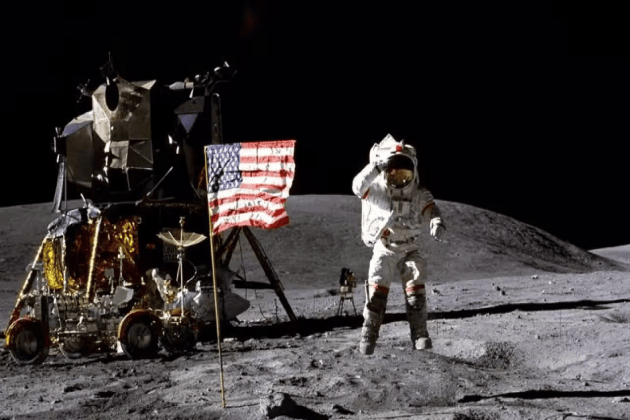Most bike lanes in inner Melbourne have less than 40% tree cover - that'll get worse, new maps show
The Conversation
13 Apr 2025, 20:08 GMT+10
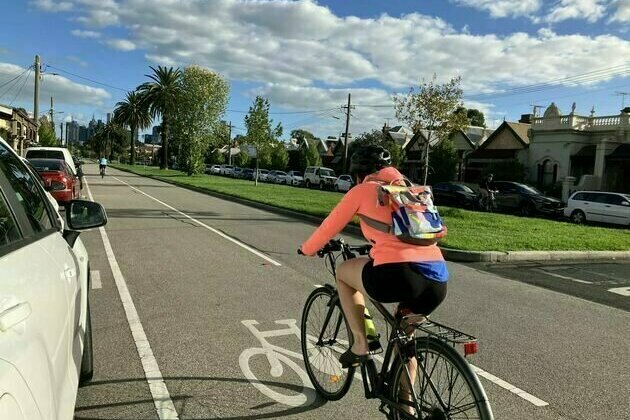
Walking and cycling is good for people and the planet. But hot sunny days can make footpaths, bike lanes and city streets unbearable. Climate change will only make matters worse.
So city planners and decision-makers need to provide adequate shade for walking, cycling and other forms of active transport - including from good tree canopy cover.
Unfortunately, our recent research reveals Melbourne's transport strategy and its separate strategy to increase canopy cover from 22% to 40% by 2040 aren't currently working together.
Our research found most bicycle lanes in inner Melbourne today have less than 40% canopy cover. And as the maps below show, future bicycle lanes will have even less. There's plenty of room for improvement.
We used the City of Melbourne as a case study to explore bikeability, tree cover and health.
The city council area covers 37 square kilometres, taking in suburbs from leafy Parkville to industrial Fishermans Bend.
When we mapped tree canopy cover against the active transport network, we found most bicycle lanes have less than 40% canopy cover. Some cycling corridors - such as along Royal Parade and parts of St Kilda Road - stand out with relatively high canopy cover. But they are few and far between.
And it's about to get worse.
Bicycle lanes proposed for construction have lower overall tree canopy coverage than existing lanes, particularly in urban renewal areas in post-industrial precincts such as Fishermans Bend and Docklands.
Along Royal Parade and St Kilda Road corridors, additional bicycle lanes are proposed next to existing lanes. However, in current conditions, the proposed new bicycle lanes have lower canopy coverage than existing bicycle lanes along the same corridor.
We also examined the city's transport and urban forest strategies. The latter includes the council's ambitious goal to increase canopy cover to 40% by 2040.
We found both the transport and urban forest policies recognise that they can contribute to the health and wellbeing of city residents, workers and visitors. They also acknowledge the health risks associated with lack of physical activity, such as heart disease, lung disease and diabetes. But there are key gaps.
The transport strategy broadly refers to climate change, but does not mention urban heat.
In contrast, addressing urban heat is one of the main stated aims of the urban forest strategy. But there's only a passing reference to encouraging outdoor activity and exercise.
There are signs though that this may be changing - in 2022, Melbourne has joined a handful of other cities worldwide in appointing chief heat officers to focus planning and action for cooler cities.
Trees need sufficient space for healthy growth. This includes space below ground for a strong and stable root system as well as room to grow up and spread out.
For street trees, extra care must be taken to facilitate this growth. The locations of other infrastructure, both above- and below-ground, need to be taken into account.
Smaller trees may be more appropriate in some urban areas, particularly where overhead powerlines require clearance, but obviously these trees will provide less canopy. Likewise, healthy tree root development can be disrupted by underground services, unless high quality soil and sufficient space is allocated.
To ensure trees are still thriving in 50 or even 100 years time, planners also need to select species that can withstand hotter and drier conditions.
Street trees cool urban areas by shading surfaces and releasing water into the air. This can lower air temperatures by 1-2C. But the temperature difference on the ground can be even more substantial. Asphalt can be anywhere from 13C-20C cooler under dense tree canopy shade.
Reducing the amount of heat roads and other hard surfaces absorb eases what's known as the urban heat island effect, in which cities experience warmer temperatures than green spaces.
Climate change is increasing the frequency and duration of heatwaves. This adds to the pressure on Australia's health services, including ambulances and emergency departments. If current rates of climate change continue, Victorians are likely to experience twice the annual number of very hot days by the 2050s, compared with 1985-2005.
All of this means walking or riding in the absence of shade can expose people to heat-related illness and even premature death.
Our research shows planning policies must work together more effectively for liveable cities. This is particularly important when it comes to building new infrastructure such as roads, bicycle lanes and footpaths.
Proactively planning for more trees in these spaces can promote healthy tree growth, with benefits for human health in cooler cities.
And while we can plant trees next to bike lanes for future shade, the need to protect cyclists from heat now means we should locate bike lanes along existing shaded streets.
City planners and decision-makers need to ensure the places we live, work and play are designed to promote active transport. That means ensuring transport routes align with our urban forest.
Acknowledgements: thanks to Bachelor of Design, Urban Planning (Honours) student Crystal Tang who carried out the research that underpins this article.
 Share
Share
 Tweet
Tweet
 Share
Share
 Flip
Flip
 Email
Email
Watch latest videos
Subscribe and Follow
Get a daily dose of Brisbane Star news through our daily email, its complimentary and keeps you fully up to date with world and business news as well.
News RELEASES
Publish news of your business, community or sports group, personnel appointments, major event and more by submitting a news release to Brisbane Star.
More InformationAustralia
SectionHe makes things look so easy: Chawla hails Virat Kohli for chase masterclass against RR
New Delhi [India], April 13 (ANI): Former India spinner Piyush Chawla hailed stalwart Virat Kohli after he pulled off another chase...
ICC introduces a specialized support program for Displaced Afghan Women Cricketers
New Delhi [India] April 13 (ANI): The International Cricket Council (ICC) on Sunday unveiled the establishment of a dedicated task...
Virat Kohli joins David Warner to become second player to complete century of half-centuries in T20s
Jaipur (Rajasthan) [India], April 13 (ANI): Royal Challengers Bengaluru batting maestro Virat Kohli toppled a massive record while...
Most bike lanes in inner Melbourne have less than 40% tree cover - that'll get worse, new maps show
Walking and cycling is good for people and the planet. But hot sunny days can make footpaths, bike lanes and city streets unbearable....
Top unis have imposed new restrictions on campus protests. What does this mean for students, staff and democracy?
A wave of restrictions on protesting has been rippling through Australia's top universities. Over the past year, all of Australia's...
Strongmen, Daggy Dads and State Daddies: how different styles of political masculinity play into Australian elections
Australian politics has historically been a male domain with an overwhelmingly masculine culture. Manhood and a certain kind of masculinity...
International
SectionUS pulls out of shipping decarbonisation talks in London
LONDON, UK: The United States has pulled out of international talks in London about reducing pollution from ships. These talks are...
US warns of Chinese spy tactics targeting officials
WASHINGTON, D.C.: The U.S. government warned this week that Chinese spies are using trickery to try to hire current and former U.S....
New Mexico opens primaries to nonpartisan voters
SANTA Fe, New Mexico: More and more voters in New Mexico don't belong to any political party. Until now, they couldn't vote in primary...
Trump administration weighs summer military parade in D.C.
WASHINGTON, D.C.: The Trump administration is in early talks about holding a large military parade in Washington, D.C., this summer—a...
NASA pick backs moon mission as top priority, easing Mars concerns
WASHINGTON, D.C.: U.S. President Donald Trump's choice to lead NASA, Jared Isaacman, has told lawmakers that sending astronauts back...
Mississippi and Kentucky move toward ending income tax
FRANKFORT/JACKSON: It is been about 45 years since a U.S. state last got rid of its income tax on wages and salaries. But now, Mississippi...

